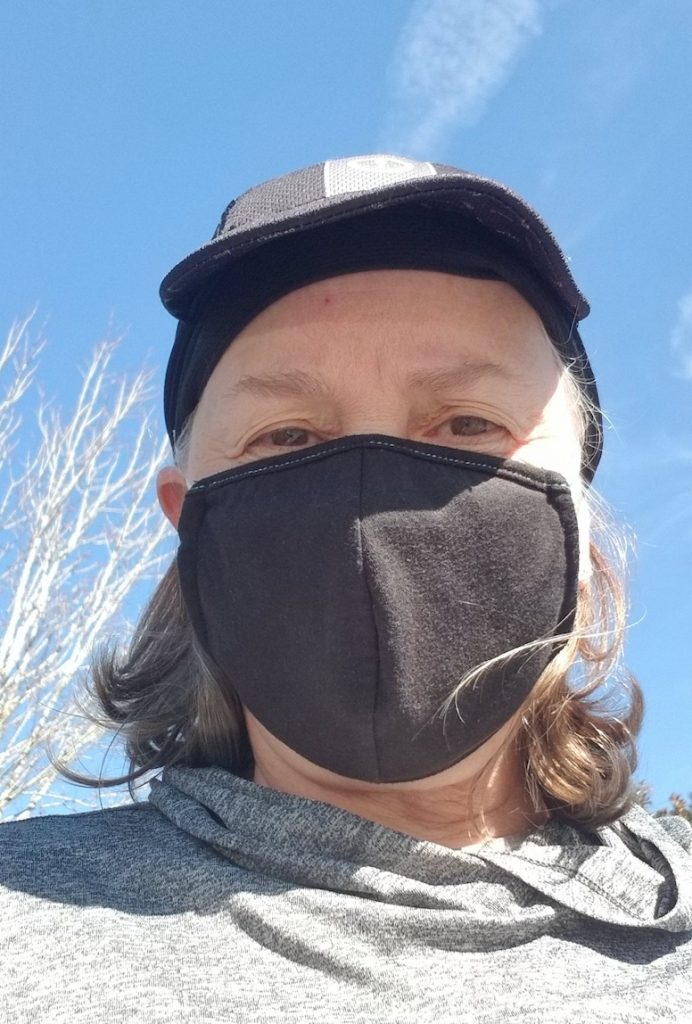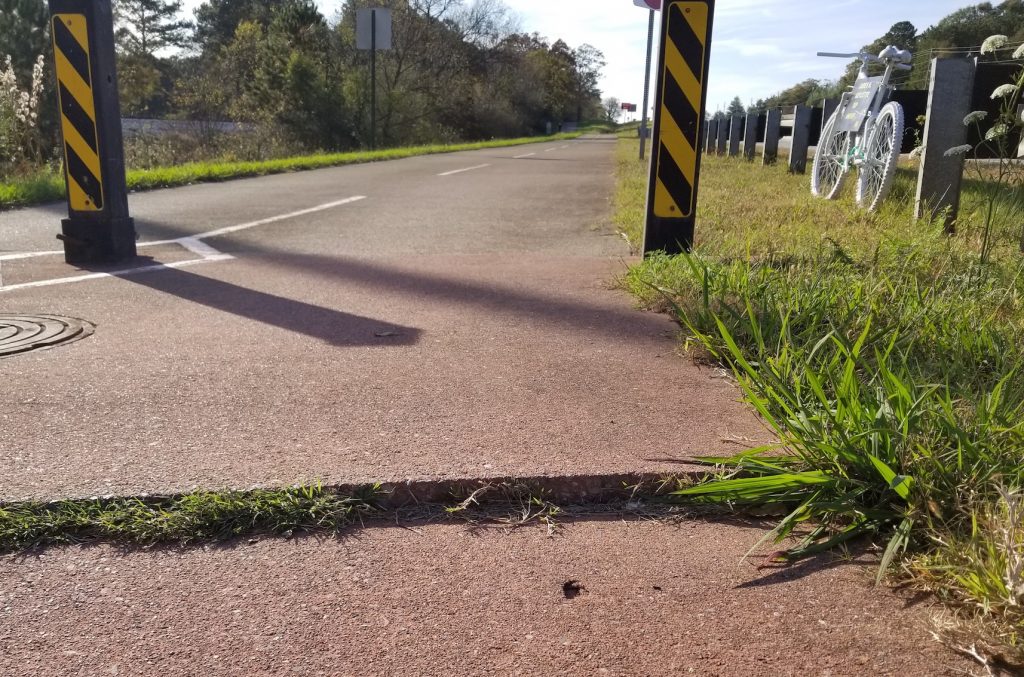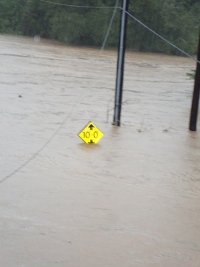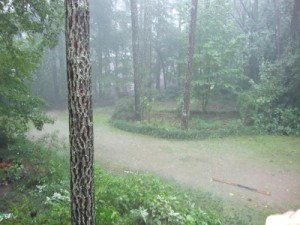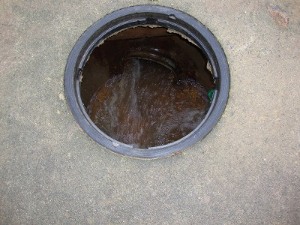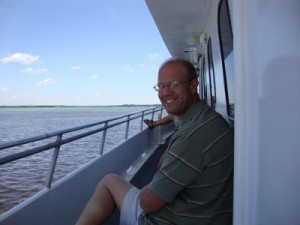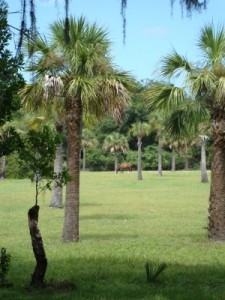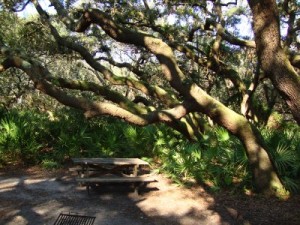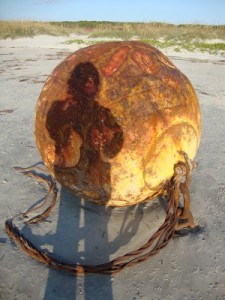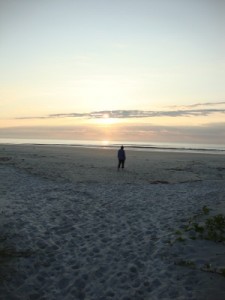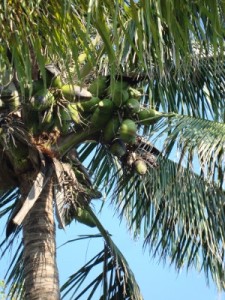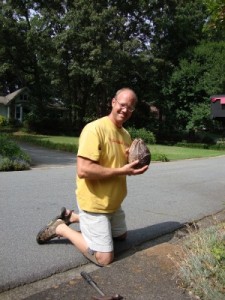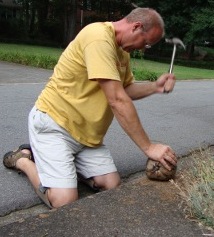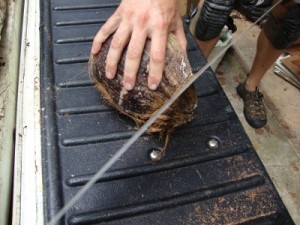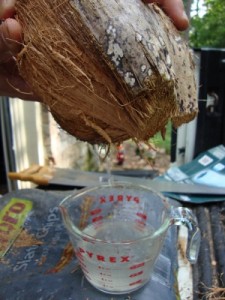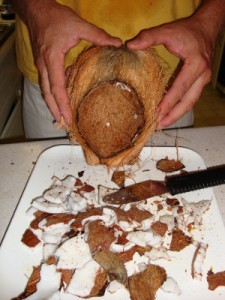by Karen
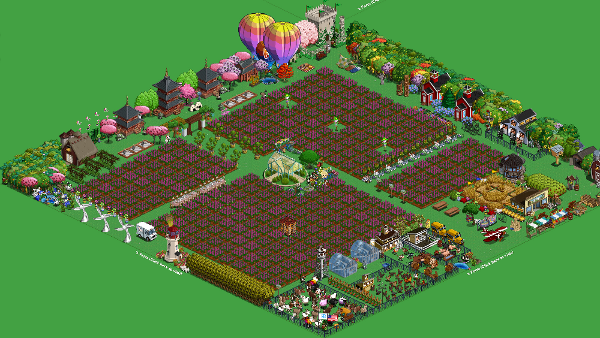
Whole Farm
This is one of two posts about my love-hate experience with Farmville.com. Here, I share how my Farmville design pays tribute to a co-op based farming and crafting educational center that I would like to build. The actual Farmville experience is somewhat tangential for this post. The Farmville context is here primarily because being otherwise engaged in distracting activities like playing a brainless game occupies the part of my mind that is in overdrive and gives me a little dreaming space. So, with no more delay, here is a little trip into the vision of one player.
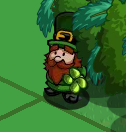
Farmville is off the charts in “cute”, but it doesn’t translate well into the real world (or try). So, my imagineering includes things that are what they seem, but also things that are not so much real world features. What those things mean to me is not apparent without the back story. For example: I have a green leprechaun garden gnome in each corner of the farm, a lighthearted acknowledgment that I will need pots of gold for start-up cash. Some features represent key parts of my plan while others are just a bit of available whimsy.
I’ll share my co-op by beginning in the north at the top corner, continuing around the farm clockwise, and then finishing in the center. The general store and co-op in the southeast are the central theme of my vision and they contain the core features, so, if you are the “skip straight to dessert” type, be sure to look there.
North, The Festivals
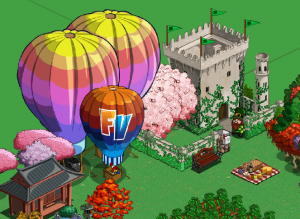
In the north corner there is a castle with three hot-air balloons. The balloons are placed closely together as they would be for an evening glow at a balloon festival. These balloons together with the castle remind me of Malcolm Forbes’s more famous pursuits. But, surprisingly, they are not among those things placed on my farm in whimsy. Renaissance Festivals and Hot-Air Balloon Festivals both present a magnet for revenue and potential for education that could be carried into year ’round in activities as varied as costuming, crafting, cooking, sports, physics demonstrations, history lessons and creative writing inspiration. I have the background to pull off either type of festival successfully (preferably both, and about 6 months apart to distribute labor and attractions). These events could realistically bring tourist dollars to the co-op area and also support to the educational and outreach portions of the co-op.
Moving East, the Forest
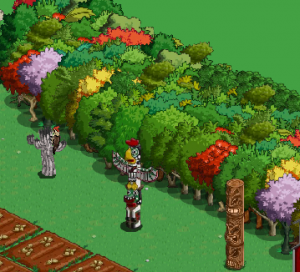
Along the northeast perimeter of the farm there is a forest. I like to idealize this forest as a primary forest with pristine riparian zones and areas for recreation, education and conservation. I’d love for this program to be part of conserving a large forest at risk, but If this type forest does not exist on or near my co-op location, we may instead visit Public Lands or commercial forests on field trips, in books or on websites where we can teach and learn about the differences between different types of private, public and commercial forests, what makes each type of forest important or unique and why they all need to exist. Often, even the people managing one of these types of forest knows little or nothing about the other types. That understanding is, however, important to good management, communication, community planning, strong business interests and sustainability, even to understanding the evening news.
Educators Willing to also Learn
The two schoolhouses beside the forest represent balance and two-way learning, educators as students and students as educators. People love to tell you what they think they know. Many non-profit organizations fail to help a community because they view a problem from the outside and preach solutions that worked in a different setting, culture or context, but they fail to adapt to the unique aspects of a particular situation or to listen to the people they are trying to helping. I have seen many surprising examples in the documentation of organizations you know. There have been improvements in recent years and many of the more complex issues in his type of work are now making it to the public through news media and outreach, bringing about a more widespread familiarity with relevant complexities, but there is also a greater profusion of material that is churned out by people fed on opinion, sensationalism and fallacy. While better information is available, the water is murkier and in many ways we must work harder than ever to find the pearls and stay on target.
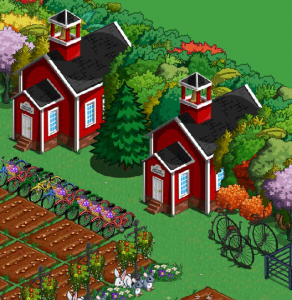
To handle these issues, this program will be about adaptation and two-way communication. We will look to see how other programs achieve success and where they have failed and if they hold a relevant lesson for us. There is a new age in these programs. Some organizations are applying business skills and careful analysis to finding the best ways to create benefits and independence rather than dependency. Finding the promise and the success will be difficult, but it is more achievable than ever before.
You Know There have to be Bikes Involved!
In the school as well as throughout the program, everything and everyone will multi-task. For example: The bicycles outside the schools are great for transportation or recreation. There are the more common modern bicycles as well as the old fashioned penny farthings that add extra interest and fun. When compared to each other, these bicycles can also be used to teach a lesson on gearing and mechanical advantage, or a history lesson on when and how the two different styles developed, or even their history and relevance to women’s rights movements. The bicycles in this area fit into the plan in other ways. There could be paved and mountain biking trails with rentals, cycling events to promote healthy outdoor activities, a program that repairs and redistributes donated bicycles, and more.
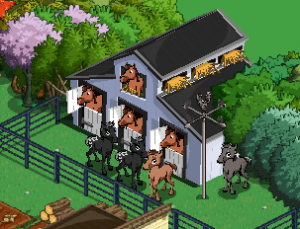
Make it So
The stable is my “lemonade stand”. By that I mean that it represents an opportunity to make the best of things. I do not expect my co-op to actually have stables, but life is about unexpected opportunities and balancing focus with openness. The stable is here to remind me not to get too carried away in my vision to be able to see. In some ways this is the central point of my theme. There is a firm structure and a business plan that show up primarily in the co-op, but the stables really represent the mission statement. If life presents the co-op with stables and someway to manage them in a manner that benefits the program, there should be stables. If something else works, we need only to be able to see and say yes, to follow through and act on opportunity.
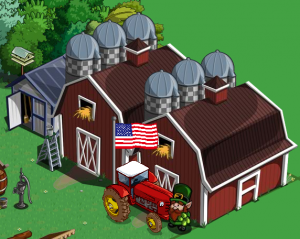
In the east corner there are barns. In Farmville the barns are used to store all of the farm loot that you accumulate through play. (As an aside, Farmville can be seen as a “green” choice because it gives us a place to use that compulsive, seemingly evolutionary desire to collect stuff, trophies or statues, or to satisfy that need to keep up with the neighbors, without the accompanying accumulation of actual real world material goods).
The barn is another building that may or may not exist at my co-op. For now let’s say that one barn is for farm use and equipment. We can think of it as the facility plant where maintenance equipment is stored. The second is multipurpose. In the fall there may be dances, weddings, hay rides, movie nights, community meetings or other traditional and non-traditional activities.
The storage building beside the barns represents a drop off point for a community recycling program. Usually these groups are dedicated to keeping useful things out of landfills. They use any number of media platforms to connect people with things that they don’t need to people who could use those things. The program is not designed for people who are selling, rather for those who are giving things away so that the purchase price is never what causes a thing to go in the landfill that might otherwise be used for a new purpose or by a new person.
Sometimes those things are big ticket items, but more often they are small, Often they garage sale leftovers. I’ve seen people give away something as small as coupons, as nice as expensive event tickets on or as big as a boat. There is a sense of paying it forward and sometimes givers even offer to mail paper items. Givers and receivers can meet in a central location, but usually pick things up at the owner’s home. Since I’d be starting from scratch, I think a program of my own design with a central drop off point might create stronger benefits for this type of area in privacy and total miles driven by participants. I’ve recently heard of a tent in New York that is open 24 hours a day and based on the same principle. There is no need to provide security for the tent because everything is free and the tent is open 24 hours a day. Whether or not 24 hour access might be wise in the coop area would involve many considerations currently unknown.
Water is Life
Moving south, as we approach the general store (my representation of the co-op); there are a well, a pump, and a water barrel all together. They are here to acknowledge the importance of water. Water is life, and all of the water on Earth has been recycled through natural earth filters time and again. How we use water and how we conserve and care for it, whether or not we allow it to clean itself before reuse, whether or not we use water from aquifers faster than natural processes can refill it, all will dictate our future for many generations to come. Somewhere on my co-op there will be a large mural depicting a local river with a quote that closes one of my favorite books, A River Runs Through It “Eventually, all things merge into one, and a river runs through it. The river was cut by the world’s great flood and runs over rocks from the basement of time. On some of the rocks are timeless raindrops. Under the rocks are the words, and some of the words are theirs. I am haunted by waters.”
And now for my co-op!
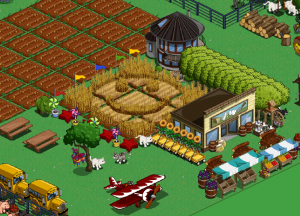
The general store and the fruit, flower and farmer’s market stands all represent the co-op portion of my plan. It is the core of the project and will contain fresh farmers market items, both produce and prepared goods, as well as a craft items. My co-operative is partly modeled after CASEM, a co-op that I visited and studied in Monteverde, Costa Rica, and it will be partly modeled on others. I would like to offer a micro-loan program for participants similar to the model of Grameen Bank. The Rwanda Project is a specific example of how micro-loans are working in foreign countries. I see the micro-loans as a means for participants who could not otherwise purchase supplies for crafting to get a start with the hand up rather than hand out philosophy.
The co-op will offer programs for adults as well as children and we will have leaders who can follow as well as lead. It will have low level goals like teaching a skill or learning facts and it will have high level goals like improving the fundamental quality of life for those who participate.
My co-op will differ from CASEM in that it will provide facilities for crafting in addition to sales space. We will provide for a wide variety craft activities from needle and paper arts to pottery, candle making, design, painting, sewing, paper mache’ and possibly woodworking, weaving or doll making. If someone donates equipment of any kind we will see what we can do with it. One can earn the use of the facilities by working in the co-op for a certain number of hours, by paying, or with a combination of both, what ever fits their need. I see these facilities in rooms across the back of the building with space to market co-op goods in front and cafe’ space in between. Goods from the co-op will also be offered via the Internet, possibly through a vendor like Etsy, possibly through a self-run program, possibly both. Teaching or learning business and financial skills will be an important part of the program from balancing of personal budgets to actual cost-benefit analysis to scheduling and motivation. I plan to build synergy. Volunteers who teach or work may also benefit by attending classes to learn other skills or trades, or they may simply volunteer.
I see this as located in a rural area, supplementing the incomes of stay at home parents or others who would like to earn more. However, the co-op also needs to be located in a area where there is access to brick and mortar customers as well as the Internet customers, near an interstate between rest stops where travelers might wish to stop or near a vacation spot are potential locations. It could also be on an urban edge and help to preserve a family farm or critical habitat. It will have several features to attract customers and visitors. These may include a dog walk-rest station for travelers with pets; a store/eatery, possibly a bakery (people are much more likely to buy a cup of coffee or a trinket for a good cause than to donate, so, I will invite people to support the program in the most comfortable ways possible),
I’m a HAM, Russ is a HAM
I see a HAM station for education, communication and emergency preparedness (I would love it if the HAM station doorway were a scale replica of a blue police box, adjoining a room for the bigger inside effect. The Dr Who allegory would be great. Which Dr.’s Tardis would you choose? And, the real world history and culture that apply are pretty cool too). We may have an Internet cafe’ with secure internet access, a borrowers bookcase, or Little Free Libraries outside, maybe a download spot and/or a listening area for audio books.
The co-op will offer things like frozen yogurt, Dole Whips (You ought not to have to go to the Magic Kingdom or Hawaii to get one of those!) or Great Harvest Bread, whatever franchises or independent goods that research indicates to be best justified for the location. A co-op branded line of value added foods might offer the best long-term potential, canned in glass Mason jars with a recycling program. The basic goal would be to provide value added goods and services that will draw people to spend a few minutes and a few dollars to support the co-op, and in turn support the community while receiving something tangible or intangible in return. I want people to drop in for creature comforts, but to leave with something more, and to get that extra something that makes them want to linger, then come to back over and over.
The interior design of the building will use layers of visual interest that teach, amuse, and inspire, perhaps on a rotating basis. People who stop in for a cup of coffee or a light meal will notice something new on each visit. The building may be LEEDS certified construction or renovation, potentially built as a project with a local trade school, or with recent graduates. The emphasis will be on using local labor to feed the local economy.
Decor will be part retro-historic, part local flavor, part whatever is most popular and inviting at the time and it will come together to involve the community in as many ways as possible. For instance, I wouldn’t just hire local talent to paint a mural, but also get local talent to teach and create more local talent while producing the mural. Perhaps an artist-teacher could work with a 4-H group, a group of scouts or a group from a school or church teaching the children how to paint. A mural might be in a classroom that would also be available for meetings afterward so that the new artists could enjoy their own work with pride on a regular basis. I would like my co-op to provide a community gathering spot, both in the Internet cafe’ and for other things, perhaps a book club, game night, trivia night or whatever else is positive and takes root. My building will have a courtyard with a green or live wall and a staircase leading to the green roof above.
Many of the building furnishings will come from auctions, thrift stores and donations. If there is an existing building like the silo behind the general store or the lighthouse that could be repurposed with style, it would be incorporated into the plan. The more unique, the better. Local memorabilia large and small will add character. The parking lot might use porous pavers laid out with a local historic map design and there will be shade trees for cooler summer parking. A location at a crossroads to other local attractions would be perfect. Adding to the number of local attractions will increase pull to the area. The co-op will offer books, collectibles and art that reflect what is unique about the location, possibly renting booths, possibly not.
Beginning to End
Next is another feature that bears explanation, the crop circle. Less whimsy than it appears, it is inspired by a woman I heard about on the radio. She plants her front yard with wheat every year. When it is ready she invites all of the neighborhood children to make bread, teaching all of the processes from start to finish. I envision this lesson done on a larger scale than most front yards in conjunction with local schools and the side lessons could be varied as, cooking, home economics, self-sufficiency, the moral of the Little Red Hen, soil conservation, geography, landscape planning or why wheat grows best in the breadbasket of the U.S., even a lesson on where different foods come from historically. Whatever fits the needs of students has potential to be a part of it. Putting a crop circle or a maze in the wheat field could add extra fun for the kids, extra motivation for visitors to stop and see what is happening, maybe lead to additional lessons, but the big picture is in the seeds to bread lesson.
South

Monteverde Inspiration
While the farming portion of the co-op will focus on vegetables, the dairy and pig farms pictured side by side represent concepts I learned in agro-ecology as illustrated by the Monteverde Cheese Factory and the pig farm to which it donates by-products (whey). This pig farm has a wonderful design that has several levels of recycling to maximize the utility of inputs and reduce waste products to near zero. We might or might not ever have meat products. It is the multiple layers of efficiency and waste free design that I wish to carry through to my farm more than the food animals. I will carry inspired planning, economy, recycling and minimal waste through in every feature of my design, from farm produce to arts and crafts produced to the furnishings of the buildings.
Beside the dairy are the hen house and green houses. This area moves into tour, tell and touch areas that would be attractive to youth education programs. The south corner is a petting zoo. If I have a petting zoo, mine will not look like the traditional concept. It will be spread around in separate enclosures rather than located in a single spot and will have very traditional animals that you would have seen on farms fifty and a hundred years ago, heirloom or heritage animals. The idea will be to come closer to naturalized enclosures. There might be a variety of chicken breeds, perhaps chickens of the rainbow with a big rainbow worked into the enclosure and coop designs.
West
Moving west, we find bees in the middle of a field. Beekeeping can provide honey, beeswax and beeswax crafts for sale as well as an opportunity to teach the importance of pollination and pollinators, the variety of pollinators and the struggles that beekeepers and farmers alike are now facing. The lesson would carry through to also talk about dispersers.
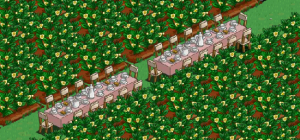
Dinner on the Grounds
Continuing west there are two long tables. This is a place for a dinner as a celebration of local and organic foods, connecting people to each other and to their food sources. We may invite the folks from Out Standing in a Field to put on a first class shindig for a special occasion, or we could go the more traditional route with a more lowbrow feast, fantastic all the same. I remember a painting my mother did “Dinner on the Grounds” of the Sunday picnic on the country church grounds as she remembered it from her childhood. This outdoors celebration in connection with our roots and our sustenance is a old as the hills, but the reconnection sometimes requires an event, a happening, to bring people together and back to the hills. Geography of food is a possible lesson for the educational version of this event, history is another and arts still another. On the other hand, it could be a good occasion for an outdoor movie showing or a concert, again, whatever takes flight.
Continuing west we run into the wind farm. These are modern smart grid windmills that can power the co-op, charge cars, or sell power back to the grid. Cars can plug into the co-op building and serve as battery back-up when not in use. That would be part, but not all, of a more complete off-grid or If wind is scarce and water is plentiful, the primary power source would be water. Either might have solar supplements. Pieces of smart grid technology are already in use in many markets, but a small sample of the most complete system possible at my co-op would show a fuller picture and help to spread the design. It would be nice if co-op and, especially features like the pottery kilns and the kitchen, were self sufficient in on-site wind, water or solar power.
Something to do While you Charge your Car
The area from the west corner leading back up to the north represents a recreational area. The forest and the Japanese Zen garden are for walking, enjoying the outdoors, meditating, learning about other cultures or simply appreciating the day. They will be part of the draw for visitors. Aside from being among the most beautiful of gardens, a Japanese garden might provide a basis for foreign exchange students to participate in internships. The Japanese theme is dear to my heart, but there could be a different theme to suit what ever may come. I would attempt to treat the relationship between local and global much the same as the Tennessee Aquarium. While not the largest or showiest, I believe the Tennessee Aquarium is one of the best I have ever visited because it has excellent displays that are primarily local, but it also places what is local in a global context for a richer understanding and greater appreciation of setting.
Central Area
Four trails lead toward the center where we have what Farmville calls the Botanical Garden. It represents the primary greenhouse to me. I actually envision this as attached to the co-op building. I would like for it to have a selection of plants chosen for local knowledge, health, clean indoor air, environmental awareness and of course marketability. I see these plants as fitting into three broad groups. One group will be unique types of fruits. There are a some varieties of fruit where only one selection of that variety is common or known in the continental US, but others exist. Kiwi and papaya are examples. If I can show one or more uncommon varieties in the green house it will give visitors one more reason to stop in. It might also provide a basis for co-op branded products and possibly present the potential for a different type of student internship.
A second group would be indigenous plants like orchids and other unexpected plant varieties that seem exotic, but aren’t. This would help people realize that there are amazing indigenous species in their own backyard so to speak, to learn the advantages of planting native species and to appreciate the biological heritage of the area.
A third grouping of plants could be those that are known to improve indoor air quality. I hope that the greenhouse will be an area that is of significant enough interest to stand alone as an attraction.
Somewhere between the greenhouse and the social space I plan to have a green (plant) wall and perhaps the co-op will have a green roof.
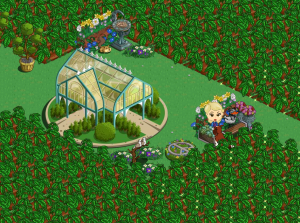
Co-op Central
And, finally, dead center is the farmer, me. That’s where I pop in to my Farmville farm when I log on and my dog Red runs in to greet me. I am surrounded by benches and plants because my virtual world neighbors can fertilize my crops faster if I am “contained” by objects, otherwise they must wait for my farmer character to walk everywhere they click. I have contained myself with things that are pleasant and I have placed doves on an olive branch nearby. Inside with me there is an open space. Every time I get the chance, I adopt an ugly duckling to put it in the spot beside me. Over time the bird realizes that it is, in fact, a beautiful swan. A sign pops up to tell me that the bird is ready. I click the transform button and move it over to join the other swans in the lake and the spot opens up again. I hope to sit beside many ducklings and watch as they transform themselves and learn to appreciate who they are and teach me what they know. This is a great center for my farm. After all, transformation is the whole point, isn’t it?
I have left a lot of questions unanswered. Location for instance. Many people think romantically about non-profit work and want to go abroad to exotic locations. That is a good thing, but charity begins at home and you never need to look very far away for an opportunity to make a difference. The right mix of conditions could exist in many locations. I sometimes imagine it near where I grew up in south Alabama or other places in the southeast because these are areas I know well. My actual location could be anywhere the co-op is needed, supported, feasible and finds its funding.
How realistic is my dream? I know that it will work and it can produce the expected results. It needs someone like me with diverse talent, education who has energy and the potential to help people.
In the minus column, it will require a lot of start up funding, a small amount by many standards, but a large amount to me. My toughest feat would be in competing for those start-up dollars with large non-profits and their even larger fund-raising machines in a stressed economy. The stressed economy makes the project both more important and harder to fund at the same time. According to a Guideposts white paper I just received, non-profits are down 25% while at the same time I see more and more emphasis on fund raising activities in articles, drives and job postings.
My strong points will be that this plan is unique in how it fits together. It should work to relieve economic and other social woes. It works with people not for them. It will become self-supporting so that the need for charitable funding would decrease over time while the project would be permanent. These are all strong advantages. It would be extraordinary if the sun were to rise on a real world benefit, just as it sets on a virtual world distraction.
Who wants to help me with building a co-op using whatever works? If you don’t know the right person, why don’t you pass this along and see if any of your friends do?
